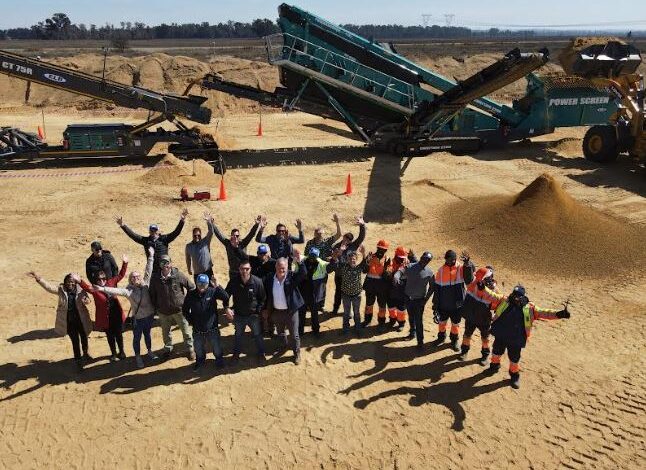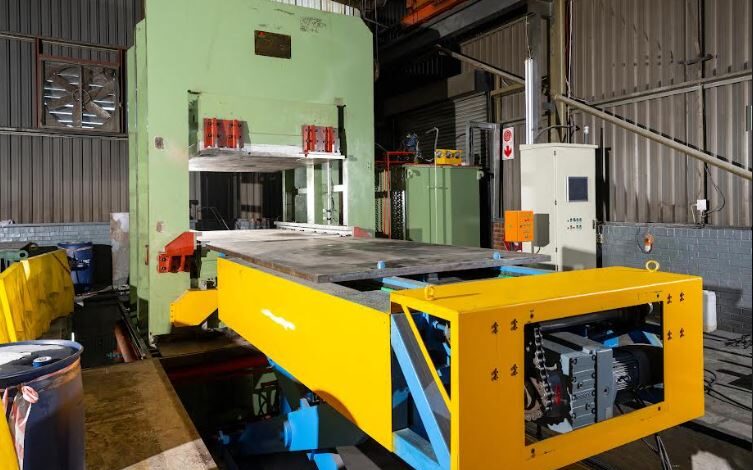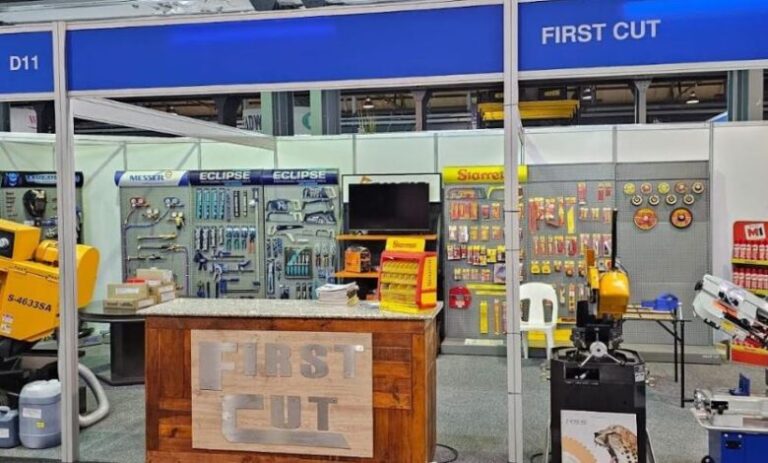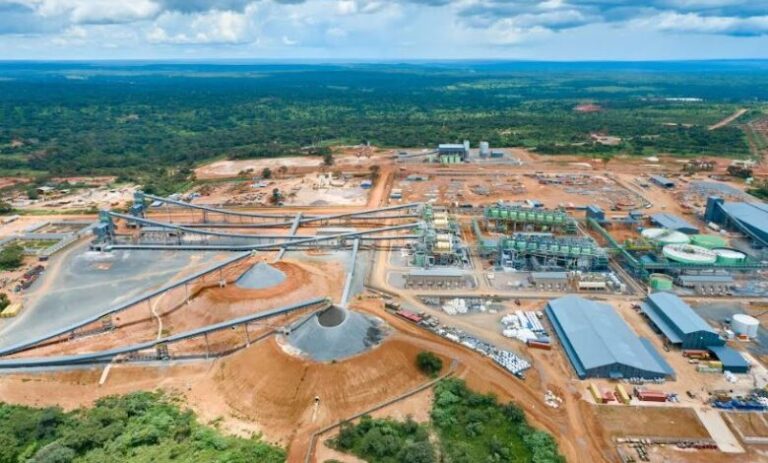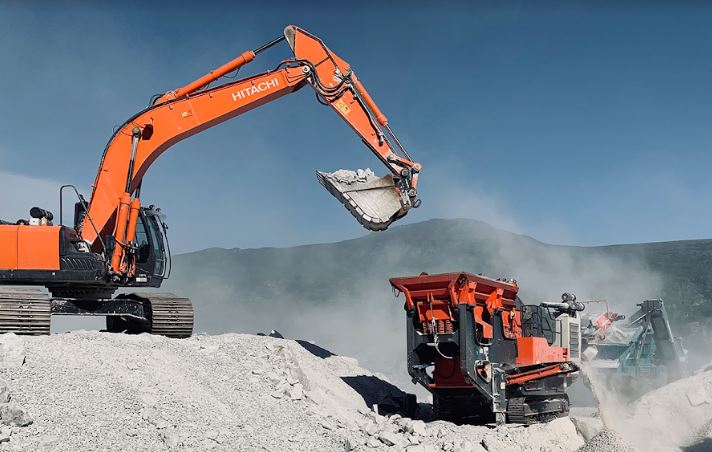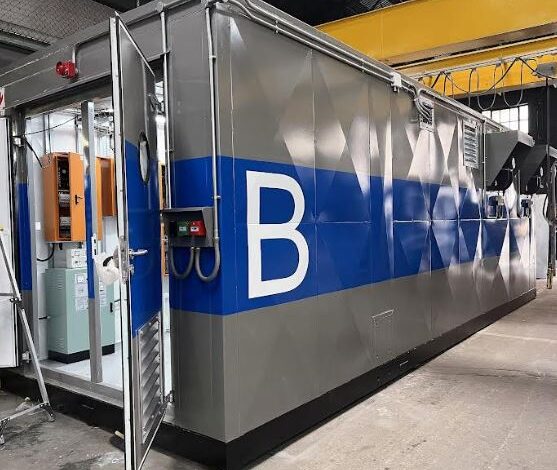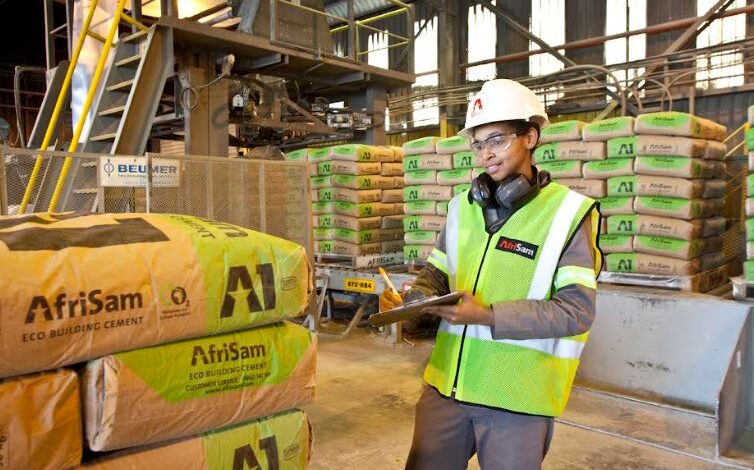From a dusty veld in Sasolburg to one of the fastest growing and most respected building product suppliers in Gauteng, Jongiliziwe Sand Mine is a shining example of how partnerships that are built on trust can lead to great things.
In the space of just under three years the mine has grown from a scraping in the ground alongside an old Meerkat burrow, to a thriving operation supplying the entire Sasolburg region as far as Johannesburg, Ekurhuleni and further afield with currently scarce and high-quality plaster and building sand. Simultaneously, the mine’s profit has grown from a few thousand Rands for the first load transported from the site to multi-millions of Rands in turnover which is funding the mine’s rapid growth.
Surprisingly, the rise of Jongiliziwe Sand Mine started during the height of the 2020 Covid-19 lockdown when founder and Managing Director, RJ Mabefu, convinced his fellow shareholders that the time was right to begin operating the mine by all means available. At that time they could only afford a rental dozer and two drums of diesel. Having just obtained the necessary right and been given the go ahead by the landowner – mining giant, Seriti – RJ set his plans in motion.
Informed decision
It soon became apparent that his instincts had paid off as the pandemic had led to already scarce plaster sand becoming almost impossible to find in the area. With funding from his partners, he had started the operation at exactly the right time and no sooner had the first loads gone out to a business associate, than potential customers began following the trucks to their source to get in on the action. Soon a snaking line of trucks began developing at the mine each day.
“We rented another loader and soon cleared the deposit of plaster sand. Luckily there was still ample building sand and while we were applying for rights on the rest of the property, we began successfully extracting this sand – but there was a snag. We had excessive biological matter which was spoiling our product and we needed help – fast.
“That’s when the relationship with ELB Equipment began and helped us take our mine to a whole new level. Area Sales Manager, Tracy Hugo, had suggested a screening solution from Powerscreen that would screen and separate the organics for an even higher quality product. How we would afford it was always going to be the problem. We had only been in business for a few months.
Heart stopping moment
“And this is where the magic happened and is something that will remain with me the rest of my life. Divisional Director, Wakefield Harding travelled with Tracy to come and see me. He asked questions, walked around the site and puzzled over the challenges for some time and finally confirmed Tracy’s opinion suggesting that a screen and some additional equipment would be the way to go and that would unlock the potential of the mine. He discussed the cost and some of the options and seemed genuinely interested in finding a financial solution to my problem.
“Then he announced that I could get the Powerscreen Warrior 600 and began greeting and walking back to his bakkie. I will never forget as he turned and said we could go ahead with the deal. I felt a little dejected and disappointed. Then, it actually sank in that he had actually said “yes” he is approving the deal based partly on our scant financials, but also based on the huge possibilities the mine has and that the equipment would be able to unlock in future,” explains RJ. Standing in the dusty, windswept site of the mine RJ painted a somewhat dejected picture with his shoulders hunched and a worried expression worn across his face. “Then he lit up and screamed as he questioned me on whether I had just approved the purchase. He began crying tears of joy and between the three of us we knew that we had all made the right decision. The relationship was set in stone and as if to underline it and get the ball rolling we learned the machine could be delivered and commissioned early the next week,” says Wakefield.
Success guaranteed
The rest is steadily being written into the history books as the Powerscreen Warrior 600 was quickly paid off. However, it soon became too small and was recently replaced by a massive Powerscreen Chieftain 2200, three brand new Lovol FL958H, FL966H and FL978H Front End Loaders, a powerful Dressta TD20M Dozer and a CT75R Powerscreen radial stockpile conveyor to make loading customers’ trucks easier and more centralised.
Simultaneously, Jongiliziwe Sand Mine is finalising rights and permissions to expand the operation to full capacity in coming months and ELB Equipment is standing firmly beside them as their trusted equipment supplier. The relationship between the mine’s growing staff with the Directors, Managers, and staff of ELB Equipment is also flourishing and the bond of trust that had so tentatively been formed in the beginning has grown to become a powerful bond of trust and mutual respect. Long live relationships, long live trust, long live good, honest people doing business the way it should be done.


